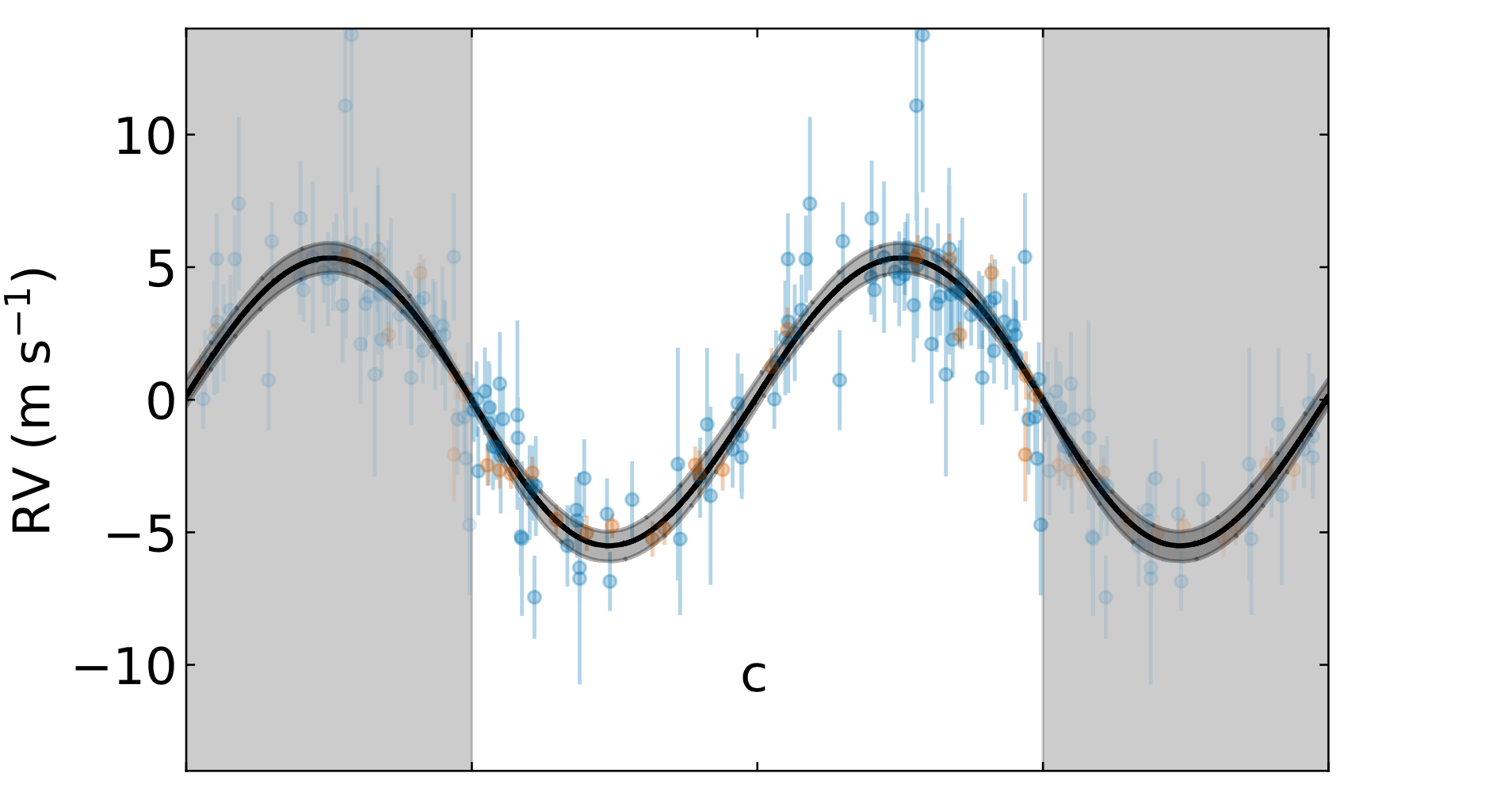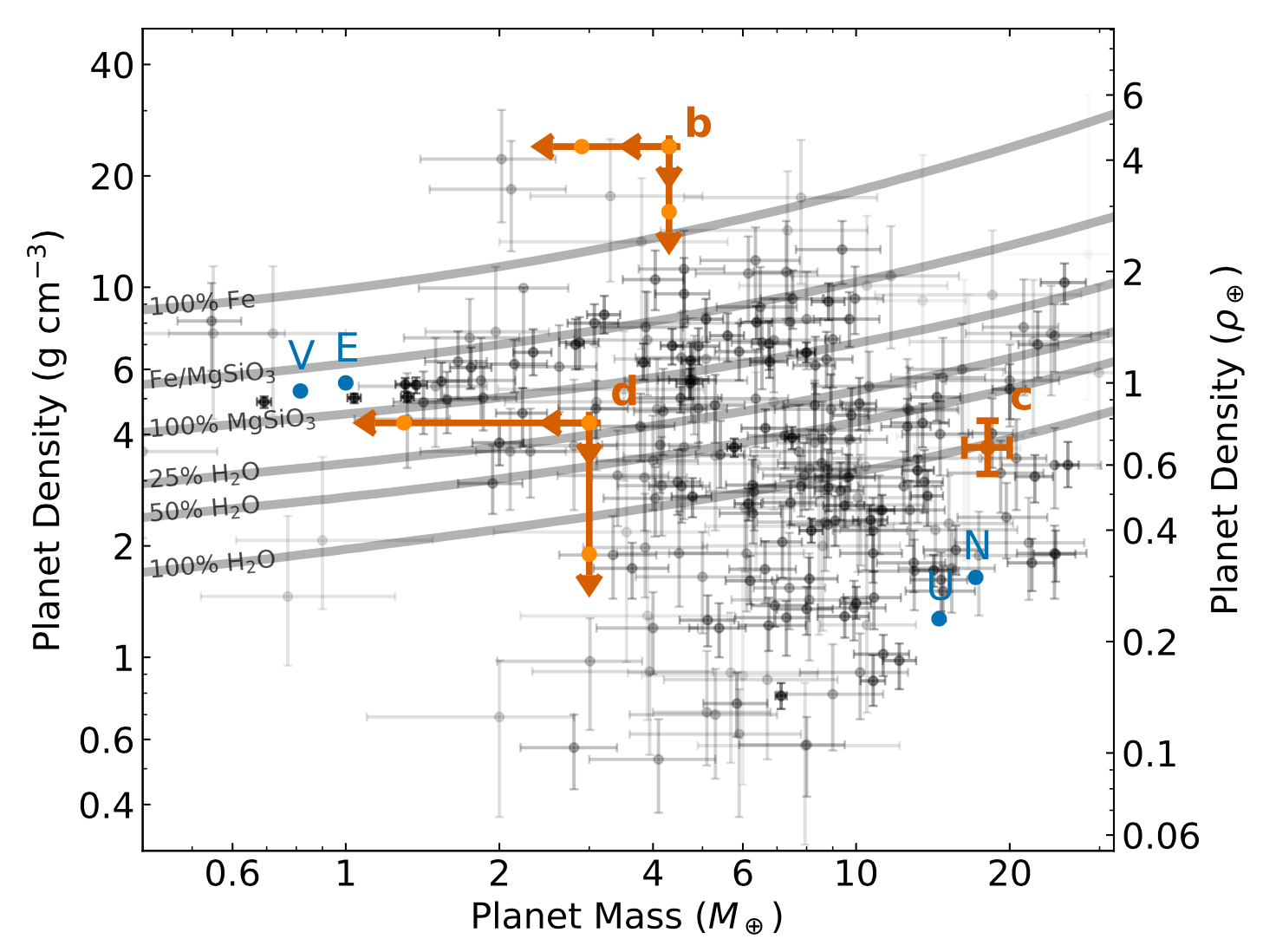The smallest planet in an Open Cluster with a precisely measured mass
Radial velocity measurements collected with the HARPS-N and ESPRESSO spectrographs allowed to study the three transiting planets orbiting K2-136, a late-K dwarf (0.742 ± 0.039 MSol) in the Hyades open cluster with three known transiting planets. The analysis of the K2 photometry established that planets K2-136b, c, and d have periods of 8.0, 17.3, and 25.6 d and radii of 1.014 ± 0.050 R⊕, 3.00 ± 0.13 R⊕, and 1.565 ± 0.077 R⊕, respectively. Analyzing HARPS-N and ESPRESSO data jointly, an international team of astronomers led by Andrew Mayo from the University of California, found K2-136c induced a semi-amplitude of 5.49 ± 0.53 m s−1 (Fig. 1), corresponding to a mass of 18.1 ± 1.9 M⊕. They also placed 95% upper mass limits on K2-136b and d of 4.3 and 3.0 M⊕, respectively.
K2-136c is now the smallest planet to have a measured mass in an open cluster and one of the youngest planets (650 ± 70 Myr) ever with a mass measurement. K2-136c has ∼75% the radius of Neptune but is similar in mass, yielding a density of 3.7 ± 0.6 g cm-3 (∼2-3 times denser than Neptune; Fig. 2).
This research and future mass measurements of young planets are critical for investigating the compositions and characteristics of small exoplanets at very early stages of their lives and providing insights into how exoplanets evolve with time.
The observing time with HARPS-N was obtained within the framework of the TNG-NOT time-exchange agreement programs. The agreement allowed Italian astronomers to apply as PI for observing time to the NOT and Nordic ones to apply to the TNG from 2013 to 2021. It has been revoked by the Nordic community after the NOT re-organization.
The paper is available on astro-ph (https://arxiv.org/abs/2304.02779).



